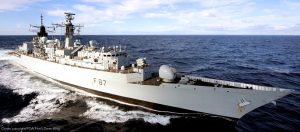Plymouth
Plymouth lies between the mouths of the rivers Plym to the east and Tamar to the west, where they join Plymouth Sound to form the boundary with Cornwall. Plymouth’s early history extends to the Bronze Age, when a first settlement emerged at Mount Batten. This settlement continued as a trading post for the Roman Empire, until it was surpassed by the more prosperous village of Sutton founded in the ninth century, now called Plymouth. In 1620, the Pilgrim Fathers departed Plymouth for the New World and established Plymouth Colony – the second English settlement in what is now the United States of America. During the English Civil War, the town was held by the Parliamentarians and was besieged between 1642 and 1646.
The visit to Plymouth in 2005, hosted by Professor Andrew Kingsnorth and his GP wife Jane, was the first to this great naval port, and took place in the bicentenary of the death of Lord Nelson at Trafalgar, recalled in the guest lecture by Professor Harold Ellis, with shibboleths shattered in a reflective talk by a naval historian. There were other eclectic presentations at the formal Friday meeting which was held in the hotel on the Hoe where we had magnificent views over the harbour. The Thursday afternoon was spent at the shorebase HMS Drake where we saw a mock disaster village, used for training sailors – both home and foreign – in managing humanitarian catastrophes; we also toured a modern frigate, HMS Chatham (see below), which subsequently laid a wreath off Trafalgar. Dinner beneath military portraits in the Commando Barracks Mess was a splendid formal affair. The meeting was rounded off with lunch in the Kingsnorth’s beautiful garden.
HMS Chatham
Header Images above show Plymouth Hoe (Left) and the Plymouth Citadel or Castle (Right)

